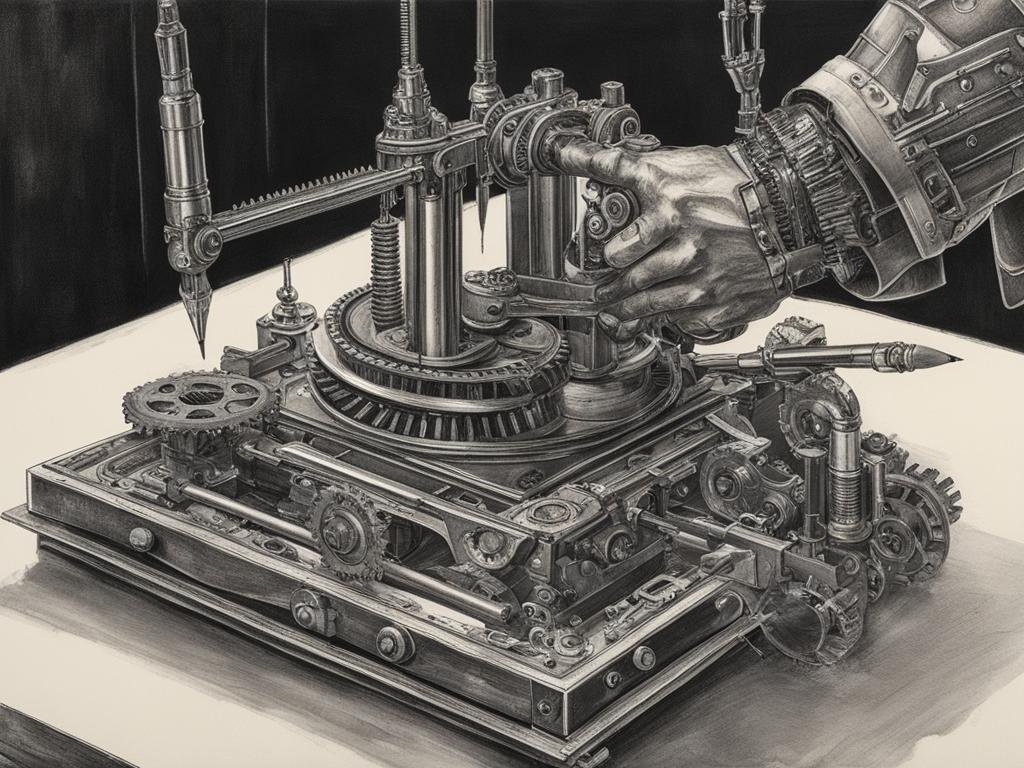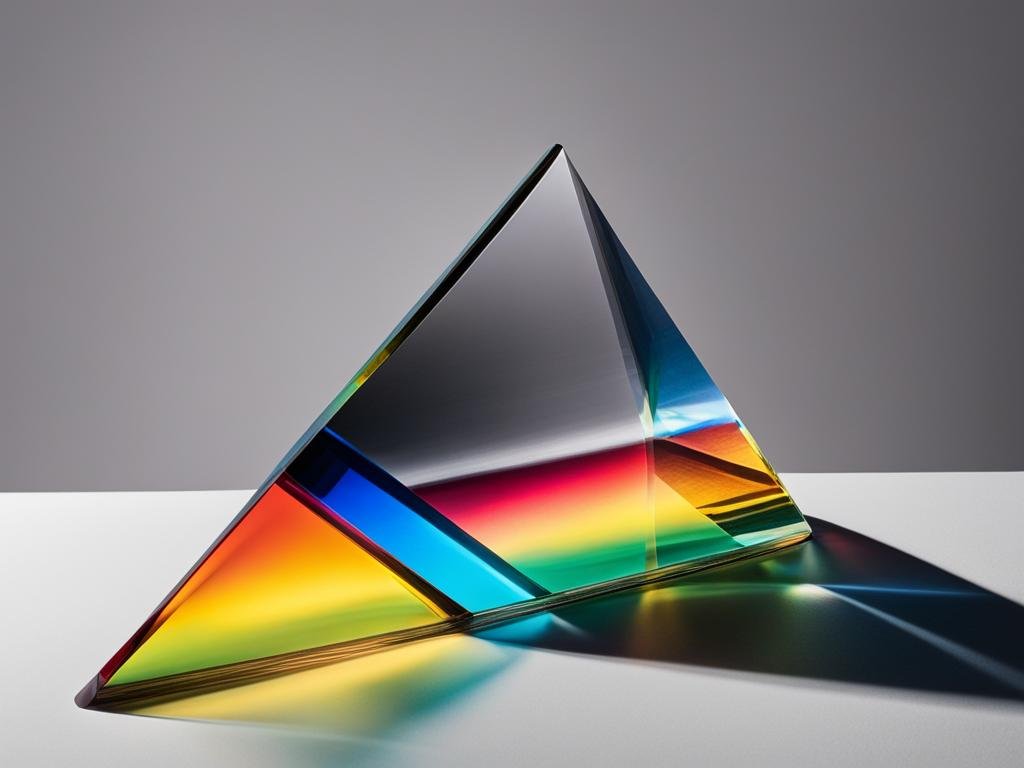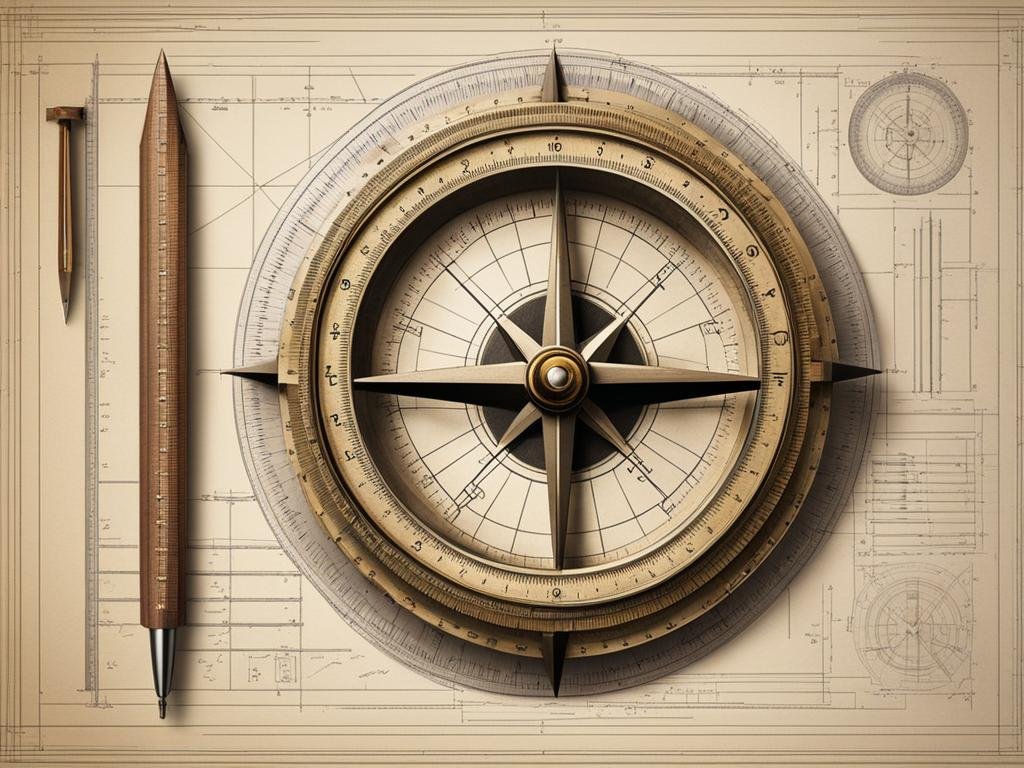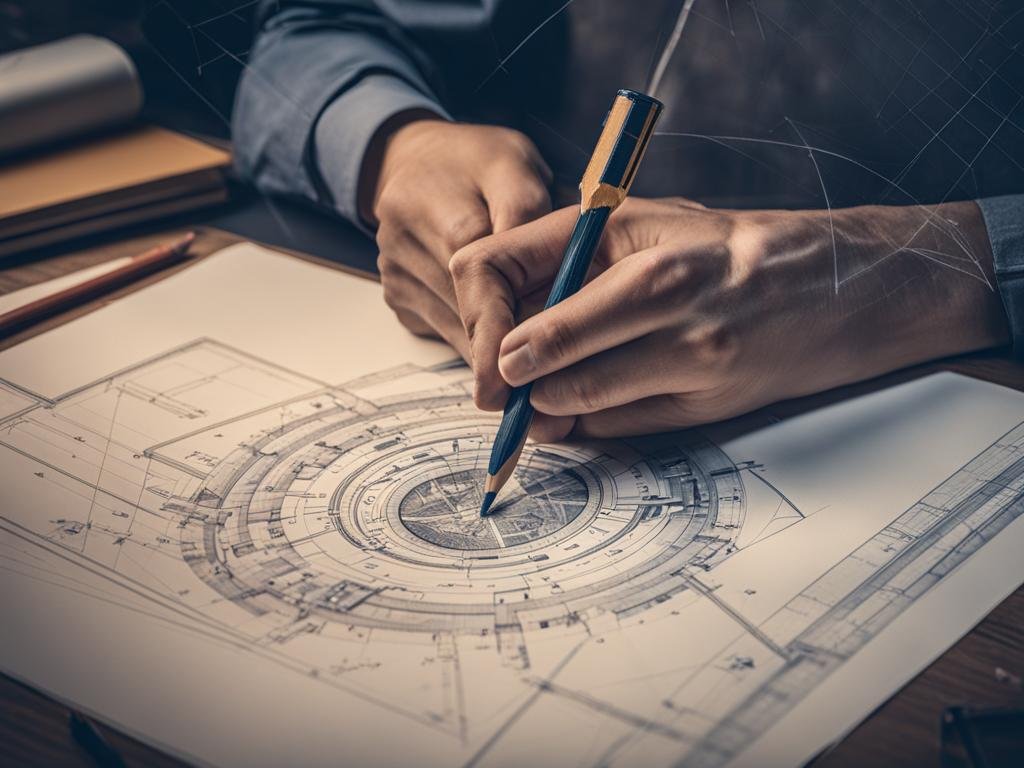Technical drawing, also known as drafting or engineering graphics, is a fundamental skill that plays a crucial role in various industries. It involves creating accurate and detailed drawings of objects, structures, and designs to communicate ideas and guide the manufacturing or construction process. Whether you’re an engineer, architect, designer, or artist, mastering technical drawing techniques can unlock your creativity and enable you to bring your ideas to life with precision and accuracy.
Key Takeaways:
- Technical drawing is a valuable skill that enhances creativity and precision.
- It is essential in industries like engineering, architecture, and design.
- Mastering technical drawing techniques can help bring ideas to life.
- It involves creating accurate and detailed drawings for effective communication.
- Whether in 2D drafting or 3D modeling, technical drawing skills are essential for engineers and artists alike.
Understanding the Importance of Invention Drawings
Invention drawings play a crucial role in the creative process, serving as visual blueprints for inventors to convey their ideas and designs. These drawings are essential for several reasons:
- Blueprint for Communication: Invention drawings provide a clear and detailed representation of the invention, showcasing its functionality, structure, and unique features. This allows inventors to effectively communicate their vision to others, including patent examiners, engineers, and manufacturers.
- Legal Documentation: Invention drawings are often submitted along with patent applications as evidence of the originality and design of the invention. They help protect the inventor’s intellectual property and ensure legal recognition.
- Visualization and Problem-Solving: Creating invention drawings helps inventors visualize their ideas in a tangible form. By translating abstract concepts into visual representations, inventors can better understand the feasibility and potential of their inventions. This process can also aid in problem-solving and refining the design.
Overall, invention drawings are crucial tools that allow inventors to communicate their ideas, protect their intellectual property, and navigate the complex world of innovation.
“Invention drawings provide inventors with a visual language to communicate their ideas and designs effectively.”
The Importance of Structure and Functionality
When creating invention drawings, it is essential to focus on capturing both the structure and functionality of the invention. The structure refers to the physical form and components of the invention, while functionality pertains to how the invention works. By emphasizing both aspects in the drawings, inventors can provide a comprehensive understanding of their invention.
Highlighting the unique features of the invention is equally important. These features set the invention apart from existing solutions in the market and showcase its innovation. Including detailed annotations and labels can further enhance the clarity of the invention drawings, ensuring that viewers can easily comprehend the design and functionality.
| Benefits of Detailed Invention Drawings | Benefits of Detailed Invention Drawings |
|---|---|
| Clear communication of the invention’s design | Protection and documentation of intellectual property |
| Visualization of the invention’s functionality and structure | Enhanced problem-solving and refinement of the design |
| Effective presentation of unique features | Comprehensive understanding of the invention |
By paying attention to the structure, functionality, and unique features of their invention, inventors can create invention drawings that effectively convey their vision and attract the attention of stakeholders in the innovation process.
The Role of Creativity in Invention Drawings
Creativity is an indispensable component in the creation of invention drawings. It is through the lens of creativity that inventors can think beyond conventional boundaries, pushing the limits of innovation and unlocking breakthrough ideas. Invention drawings are not just technical representations; they are an opportunity to convey the essence of an invention and inspire others with its potential.
By infusing creativity into invention drawings, inventors can captivate attention and spark curiosity. These drawings become more than just visual aids; they become a medium of inspiration that ignites the imagination of viewers. Through creative representation and thoughtful design choices, inventors can effectively communicate their vision and convey the essence of their invention.
Creativity in invention drawings also leads to new perspectives and breakthroughs. When inventors approach their drawings with an open mind and embrace innovative thinking, they can uncover new solutions and unique approaches to solving problems. This creative exploration allows inventors to challenge traditional norms and pave the way for groundbreaking ideas that can change industries and improve lives.
Table: How Creativity Fuels Innovation in Invention Drawings
| Benefits | Description |
|---|---|
| Visualization | Creative invention drawings bring ideas to life, allowing inventors to visualize their concepts in a tangible and engaging manner. |
| Inspiration | Creative invention drawings inspire inventors and viewers alike, igniting the drive to explore new possibilities and challenge existing norms. |
| Breakthroughs | Creativity in invention drawings encourages innovative thinking, leading to new perspectives and groundbreaking solutions. |
Overall, creativity plays a pivotal role in invention drawings. It fuels innovation, drives inspiration, and opens doors to new breakthroughs. By harnessing their creative potential, inventors can create invention drawings that not only showcase the functional aspects of their ideas but also capture the imagination and generate excitement for what could be.

Benefits of Mastering the Art of Invention Drawings
Mastering the art of invention drawings offers numerous benefits, empowering inventors to bring their ideas to life and navigate the complex world of innovation. By unlocking their creativity and honing their drawing skills, inventors can enhance their visualization and communication abilities, leading to greater success in their endeavors.
One of the primary advantages of mastering invention drawings is the ability to enhance creativity. By visualizing their ideas in a tangible form, inventors can explore different possibilities and refine their concepts. The process of translating abstract ideas into visual representations allows inventors to better understand the feasibility and potential of their inventions, leading to breakthroughs and innovative ideas.
“Drawing is the artist’s most direct and spontaneous expression, a species of writing: it reveals, better than does painting, his true personality.” – Edgar Degas
Invention drawings also serve as valuable documentation for legal purposes. They provide evidence of the originality and design of the invention, protecting the inventor’s intellectual property rights. Clear and detailed drawings showcase the unique features and functionalities of the invention, ensuring legal protection and preventing infringement by others.
Furthermore, mastering invention drawings improves communication between inventors and stakeholders. Clear and detailed drawings help convey the vision and design of the invention to potential investors, manufacturers, and customers. By effectively showcasing the features and benefits of the invention, inventors can attract support, secure funding, and drive sales.
Overall, mastering the art of invention drawings empowers inventors with the skills and tools necessary to bring their ideas to fruition. Through enhanced creativity, improved communication, and legal documentation, inventors can navigate the complexities of innovation and turn their innovative ideas into successful products or solutions.

Invention Drawing Tools and Techniques
When it comes to creating compelling and accurate invention drawings, having the right tools and materials is crucial. Here are some key elements to consider:
Tools
Invest in high-quality tools that will aid in achieving precise and detailed drawings. Some essential tools for invention drawing include:
- Fine-tip pens: These pens are ideal for creating sharp lines and intricate details.
- Mechanical pencils: Mechanical pencils allow for precise, consistent line work.
- Precision rulers: Accurate measurements and straight lines are essential, so invest in rulers that provide precise markings.
Materials
Choosing the right materials for your invention drawings can greatly enhance the overall quality of your work. Here are some materials to consider:
- Sketchbooks: Opt for sketchbooks with thick, acid-free paper to prevent bleed-through and ensure longevity.
- Drawing boards: Drawing boards provide a stable surface for creating your drawings and help keep your work flat and steady.
Perspective and Proportions
Understanding the basics of perspective and proportions is essential for creating realistic and visually appealing invention drawings. Perspective allows for the accurate representation of three-dimensional objects on a two-dimensional surface, while proportions ensure that elements within a drawing are correctly sized and scaled in relation to one another.

Developing Your Invention Drawing Skills
Mastering the art of invention drawings requires honing a variety of sketching techniques to capture detail and depth in your designs. By employing different styles and approaches, you can bring your drawings to life and create visually captivating representations of your inventions.
One effective sketching technique is freehand sketching, which allows for the generation and refinement of ideas. Mind mapping and storyboarding are also useful methods for conceptualizing your designs and exploring different possibilities.
Adding detail and depth to your invention drawings enhances their visual impact. Techniques such as shading, highlighting, using different line weights, and incorporating textures and patterns can bring your drawings to life.
Exploring Styles and Approaches
Experimenting with different styles and approaches is crucial for developing your invention drawing skills. Traditional techniques, such as pen and ink or pencil drawings, can lend a classic and timeless feel to your designs. On the other hand, digital tools offer limitless possibilities for creating unique and innovative drawings.
Consider exploring mixed media approaches that combine traditional and digital techniques. This allows you to leverage the advantages of both worlds and unleash your full creative potential. The interplay between different mediums can result in visually striking and captivating invention drawings.
Enhancing Your Creativity in Invention Drawings
The art of invention drawings provides ample opportunities to unleash your creativity. By incorporating elements such as color, texture, unique elements, mixed media, and digital tools, you can elevate your drawings to new heights. These enhancements not only make your invention drawings visually captivating but also help convey your ideas with greater impact.
Color is a powerful tool that can evoke emotions and create visual interest in your invention drawings. Choose colors strategically to highlight important features or create a specific mood. Texture adds depth and realism to your drawings, making them more engaging and realistic.
Introducing unique elements in your invention drawings can set your designs apart and make them memorable. Think outside the box and experiment with unconventional shapes, patterns, or materials that showcase the innovative nature of your invention.
“Mixing media and embracing digital tools can open up a world of possibilities for your invention drawings,” says renowned artist Emily Thompson. “Combining traditional techniques with digital elements allows you to achieve stunning effects and push the boundaries of your creativity.”
Table: Comparing Traditional and Digital Tools in Invention Drawings
| Traditional Tools | Digital Tools |
|---|---|
| Sketchbooks | Digital tablets |
| Pencils and pens | Graphic design software |
| Paints and brushes | Digital painting tools |
| Eraser and smudging tools | Layering and blending options |
By exploring and embracing mixed media and digital tools, you can add depth, versatility, and precision to your invention drawings. These tools allow you to experiment with different techniques, effects, and styles, helping you to find innovative ways to bring your ideas to life on paper or screen.
With the right combination of color, texture, unique elements, mixed media, and digital tools, you can take your invention drawings to the next level and captivate others with your creative vision and innovative ideas.
Applying Invention Drawings in the Real World
Invention drawings play a significant role in various industries, including manufacturing, construction, and sales. These drawings serve as a visual representation of an invention’s design and functionality, enabling manufacturers and construction teams to accurately produce and assemble the product. In addition, invention drawings are invaluable for sales purposes, as they allow potential customers to visually understand the features and benefits of the invention. They also assist inventors in presenting their ideas to investors, showcasing the potential and uniqueness of their inventions.

When it comes to manufacturing and construction, clear and detailed invention drawings are essential. They provide a comprehensive understanding of the invention’s design, allowing for accurate production and assembly. By utilizing these drawings, manufacturers and construction teams can minimize errors and ensure that the final product meets the intended specifications. This not only saves time and resources but also enhances the overall quality of the end product.
In the realm of sales, invention drawings serve as powerful tools for visual communication. Potential customers can gain a clear understanding of the invention’s features and benefits through these drawings, making it easier for inventors to market their products. By presenting detailed and visually appealing invention drawings, inventors can capture the attention of potential buyers and increase their chances of making successful sales.
Furthermore, invention drawings are crucial in attracting investors and securing funding. These drawings showcase the potential and uniqueness of the invention, helping inventors effectively convey their ideas and gain the support they need to bring their inventions to market. By incorporating compelling visuals and clear explanations in their presentation, inventors can make a strong case for their innovative ideas and inspire investors to get on board.
| Presentation | Manufacturing | Construction | Visualization | Sales |
|---|---|---|---|---|
| Clear and detailed invention drawings enable inventors to present their ideas to potential investors. | Invention drawings provide manufacturers with a comprehensive understanding of the design and functionality of the invention, ensuring accurate production. | Construction teams rely on invention drawings to assemble structures according to the intended specifications. | Invention drawings visually depict the features and benefits of the invention, aiding in the visualization process. | Invention drawings serve as powerful visual tools for marketing and selling the product to potential customers. |
Also Read : Shape Your Future With Universal Technical Institute
Conclusion
In conclusion, technical drawing is a valuable skill that fosters creativity and allows individuals to bring their ideas to life with precision and accuracy. Invention drawings serve as essential tools for inventors, enabling effective communication of their vision and design, protection of intellectual property, and navigation of the complex world of innovation.
By mastering the art of invention drawings and honing their drawing skills, individuals can enhance their creativity, improve communication, and explore new possibilities. Inspired by various sources, equipped with the right tools and materials, and armed with an understanding of perspective and proportions, inventors can create compelling and visually captivating invention drawings that truly showcase their ideas.
Applying these skills in the real world, inventors can transform innovative ideas into successful products or solutions. With technical drawing as a foundation, inventors can visualize their concepts, innovate with confidence, and contribute to the ever-evolving landscape of creativity and innovation.
FAQs
Q: What is technical drawing?
A: Technical drawing is a form of visual communication where detailed and accurate information is communicated through the use of lines, shapes, and symbols. It is commonly used in engineering, architecture, and other technical fields to convey precise details of a design or concept.
Q: How can technical drawing help in creating a design?
A: Technical drawing provides a detailed visual representation of a design, allowing the drafter to plan and visualize the various aspects of the design before actual construction or production takes place. It helps in ensuring that the design meets the required specifications and standards.
Q: Are there any free online resources for learning technical drawing?
A: Yes, there are several free online resources available for learning technical drawing. These resources may include tutorials, example drawings, and instructional videos that can help beginners understand technical drawing principles and techniques.
Q: What are the common file formats used for sharing technical drawings?
A: The most common file formats used for sharing technical drawings include PDF, DWG (AutoCAD), DXF, and STEP files. These formats are widely accepted and can be easily viewed and shared across different CAD software and platforms.
Q: What is an isometric projection in technical drawing?
A: An isometric projection is a type of pictorial drawing in which all three dimensions of an object are represented equally, resulting in a three-dimensional view that appears to be drawn on a single plane. It is commonly used in technical drawing to provide a clear and realistic representation of an object.
Q: What are the requirements for creating a standard orthographic projection?
A: To create a standard orthographic projection, the drafter needs to ensure that the object is represented from multiple views, including front, top, and side views, with accurate dimensions and proportions. This helps in providing a comprehensive understanding of the object’s shape and features.
Q: How can CAD software help in technical drawing?
A: CAD (Computer-Aided Design) software provides powerful tools and features that streamline the technical drawing process. It allows drafter to create precise and accurate drawings, generate multiple views, and make modifications efficiently, saving time and effort in the design process.
Q: What is the significance of angle measurement in technical drawing?
A: Angle measurement plays a crucial role in technical drawing as it helps in accurately representing the orientation of lines, shapes, and features within a drawing. It ensures that the angles and intersections are in accordance with the specified standards and requirements.
Q: What are the common standards followed in mechanical engineering drawing?
A: In mechanical engineering drawing, the ASME (American Society of Mechanical Engineers) standards are commonly followed. These standards provide guidelines for the creation of technical drawings, including dimensioning, tolerancing, and notation, ensuring uniformity and clarity in engineering documentation.
Q: How can technical drawing templates help in the design process?
A: Technical drawing templates provide pre-defined formats and guidelines for creating specific types of drawings, such as isometric views, orthographic projections, and sheet layouts. They help in maintaining consistency and adherence to standards, making the design process more efficient and accurate.

